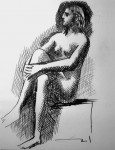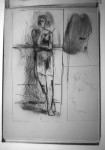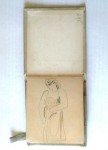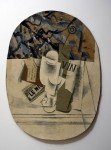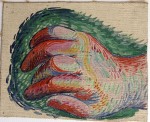 Retired electrician Pierre Le Guennec showed up at the Picasso Administration — the agency that administers his estate — on September 9 carrying a suitcase full of 175 previously unknown works by Pablo Picasso. Le Guennec claimed the artist’s last wife, Jacqueline, gave them to him as gifts after he installed alarm systems in several of Picasso’s houses, and that he had another 100 or so in a trunk in his garage. He had sent the PA pictures of some of the works in January, but they weren’t high enough quality for the experts to authenticate, so he brought them in for a live examination.
Retired electrician Pierre Le Guennec showed up at the Picasso Administration — the agency that administers his estate — on September 9 carrying a suitcase full of 175 previously unknown works by Pablo Picasso. Le Guennec claimed the artist’s last wife, Jacqueline, gave them to him as gifts after he installed alarm systems in several of Picasso’s houses, and that he had another 100 or so in a trunk in his garage. He had sent the PA pictures of some of the works in January, but they weren’t high enough quality for the experts to authenticate, so he brought them in for a live examination.
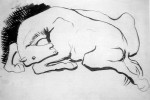 Claude Picasso, Pablo’s son and head of the Picasso Administration, didn’t believe him. At first he thought they were fakes. They aren’t signed or dated, but when the experts examined the pieces closely they found many of them were numbered using a secret system Picasso used and the collection displayed such an adept use of a variety of techniques to make forgery highly improbable if not impossible. So Claude grudgingly accepted that the works were authentic. He didn’t buy the gift story at all, though, and promptly filed suit for illegal receipt of the works.
Claude Picasso, Pablo’s son and head of the Picasso Administration, didn’t believe him. At first he thought they were fakes. They aren’t signed or dated, but when the experts examined the pieces closely they found many of them were numbered using a secret system Picasso used and the collection displayed such an adept use of a variety of techniques to make forgery highly improbable if not impossible. So Claude grudgingly accepted that the works were authentic. He didn’t buy the gift story at all, though, and promptly filed suit for illegal receipt of the works.
Last month, French police raided the Le Guennec’s home and confiscated the trove. They arrested Pierre but released him shortly thereafter. They’re keeping the collection while they investigate the allegations.
“This was a gift,” Danielle Le Guennec told The Associated Press by phone from their home in the town of Mouans-Sartoux, near the tourist Riviera hotspot of Antibes. “We aren’t thieves. We didn’t do anything wrong.”
She said the couple decided to come forward with the works this year because they were getting on in years, and “didn’t want to leave any headaches to our children” with their own estate. Her husband had undergone a cancer treatment operation in March, she said.
The works, which were kept in a trunk, didn’t appear to be much to her untrained eye, she said: “But even if this was a little jot of the pencil, it did come from the master.”
“These aren’t tableaus like the ones sold in America.”
Claude Picasso, quoted in Liberation, noted that his father was known for his generosity – but that he always dedicated, dated and signed his gifts, as he knew that some recipients might try to sell the works one day.
“To give away such a large quantity, that’s unheard-of. It doesn’t hold water,” Claude Picasso was quoted in Liberation as saying. “This was part of his life.”
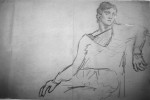 Claude says his father was a bit of a hoarder. He kept everything from subway tickets to bits of string. The notion that Pablo Picasso would have given away such a huge number of his works is utterly alien to his established patterns of behavior.
Claude says his father was a bit of a hoarder. He kept everything from subway tickets to bits of string. The notion that Pablo Picasso would have given away such a huge number of his works is utterly alien to his established patterns of behavior.
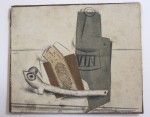 The works were from his early, most prolific period, between 1900 and 1932. Among them are drawings, lithographs, portraits — including of his first wife, Russian ballerina Olga Khokhlova — watercolors, sketches and models for some of his most famous works, a painting from his Blue Period, and 9 collages that were described by critics in 1912 as “painted proverbs” but were thought to have been lost when Picasso’s studio was flooded.
The works were from his early, most prolific period, between 1900 and 1932. Among them are drawings, lithographs, portraits — including of his first wife, Russian ballerina Olga Khokhlova — watercolors, sketches and models for some of his most famous works, a painting from his Blue Period, and 9 collages that were described by critics in 1912 as “painted proverbs” but were thought to have been lost when Picasso’s studio was flooded.
The estimated market value of this hoard according to the Picasso Administration is around $79 million. The Le Guennecs claim they didn’t want to sell them, just have them authenticated.
